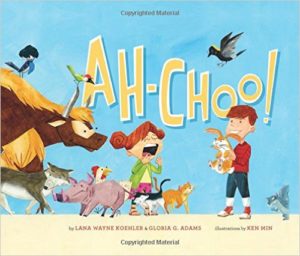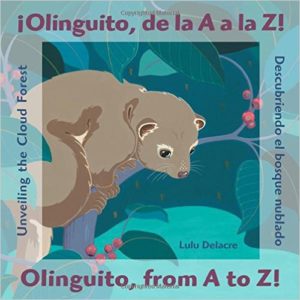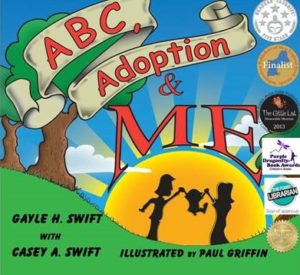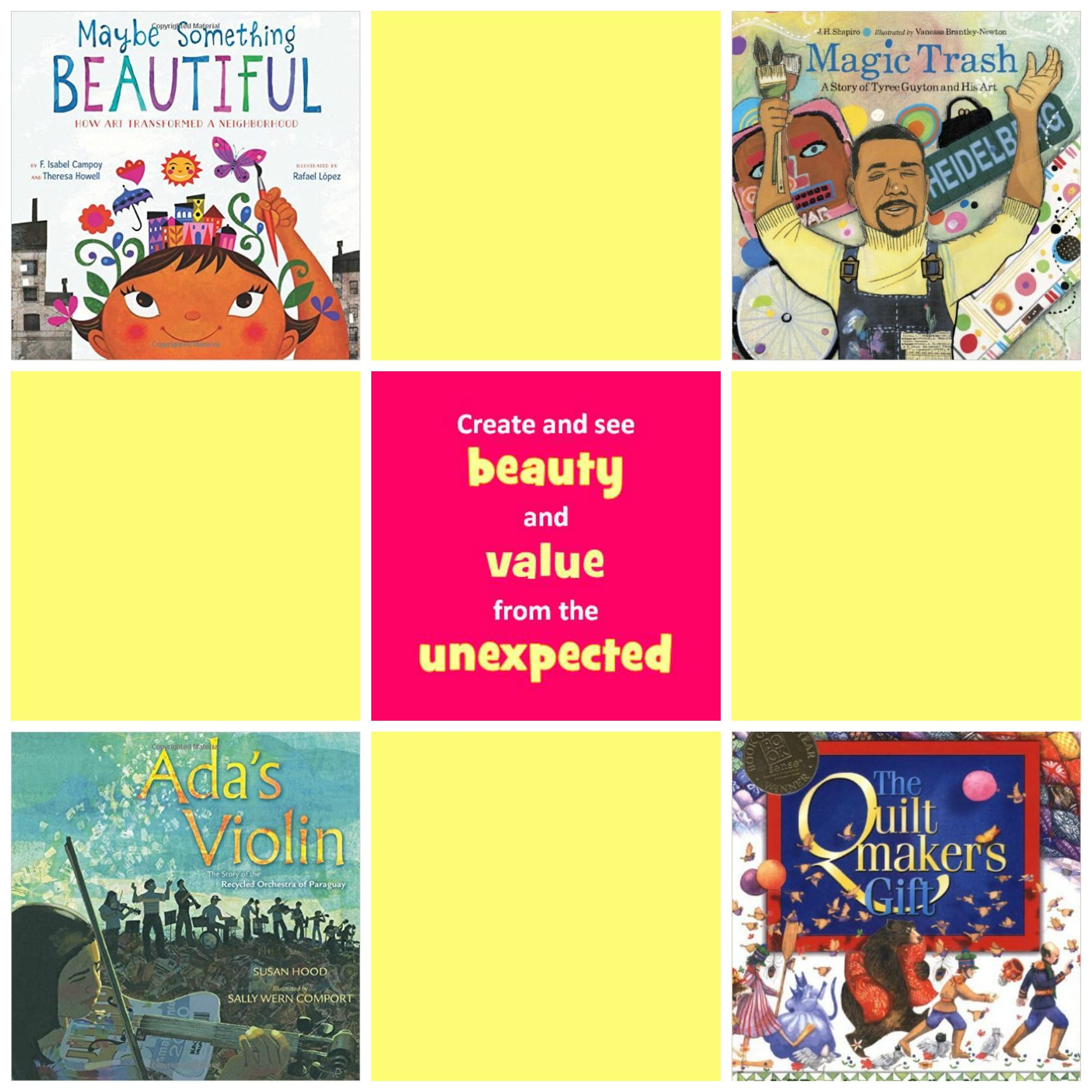 I enjoy reading children’s books that reveal the power of art and how we are all artists who can find and create beauty and value in unexpected places. We can transform the ordinary, the plainest scraps–of fabric, metal, paper and plastic– even trash into something glorious, inspirational and uplifting.
I enjoy reading children’s books that reveal the power of art and how we are all artists who can find and create beauty and value in unexpected places. We can transform the ordinary, the plainest scraps–of fabric, metal, paper and plastic– even trash into something glorious, inspirational and uplifting.
“Beauty,” they say, “is in the eye of the beholder.” Human beings share an innate desire for beauty, music and creation. More importantly, the creative process can uplift individuals, even entire communities. [bctt tweet=”Art can motivate, transform and unite us as is evidenced in three of these fact-based stories.” username=”GayleHSwift”]
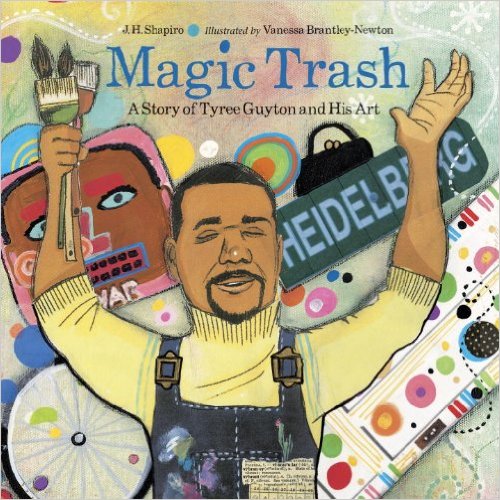
Magic Trash: A Story of Tyree Guton and His Art, by J H. Shapiro tells the story of an artist raised in poverty in urban Detroit. Traditional art supplies cost too much, so he cast his eye on found objects which he repainted and reconfigured into “art.” Encouraged by his grandfather, a house painter, he followed his dream to become a painter–of art.
After the 1967 riots, Tyree’s family moved away from Heidelberg Street but Tyree never forgot his roots. After he graduated from art school, he returned to his roots only to find destruction, violence and devastation. Galvanized by a desire to bring beauty, he began transforming the neighborhood one slosh of color, one creation at a time. Initially, Tyree met resistance. eventually he won people over. Cheered by his colorful creations, neighbors began to beautify their community, remove trash and come together to improve their neighborhood. Art sparked a movement of hope, change and improvement!
Adoption-attuned Lens 
Tyree confronted the judgment of kids and adults who thought he was weird, even crazy for aspiring to be an artist. We can explore conversations with adoptees about the ways in which people look at them as odd, crazy and not “real.” This feeling of being “other” is one which many adoptees experience. Opening the conversation can offer a relief valve for this pressure-cooker emotion.
Ada’s Violin: The Story of the Recycled Orchestra of Paraguay by Susan Hood and illustrated by Sally Wern Comport tells about a town built on a landfill in Paraguay where the people rummage through the fresh trash looking for “treasure.” The valuables they seek are items which can be recycled for pennies per pound. While the people dreamed of finding items of great value, they never truly expected to find treasure. Young people had little hope for a better life.
by Susan Hood and illustrated by Sally Wern Comport tells about a town built on a landfill in Paraguay where the people rummage through the fresh trash looking for “treasure.” The valuables they seek are items which can be recycled for pennies per pound. While the people dreamed of finding items of great value, they never truly expected to find treasure. Young people had little hope for a better life.
Until … until Favio Chavez arrived with three guitars, two violins and a dream. He wanted to teach the residents how to play music. Many children were attracted by the idea. But how could they practice in their trash town where “a violin is worth more than a house?”
Senor Chavez and Senor Gomez turned to the only resources available to them: the trash piles on which they lived. They searched for materials to build instruments on which the children could practice. Using empty paint cans, baking trays and wood scraps, they built instruments which thieves would ignore but which Ada and the other children cherished.
With practice and great effort, they learned how to make music. In the process the children’s orchestra brought hope to the barrio. They practiced. acquired skills and eventually, word of their feat reached the capital. The children were invited to perform. Eventually, they performed all over the world. They had indeed found genuine treasure in the dump. “Buried in the trash was music. And buried in themselves was something to be proud of.”
Adoption-attuned Lens  Use this story to discuss how the children overcame extremely difficult circumstances through a combination of hard work and the help of supportive people. But the courage emerged from within themselves. They had to dare to try, dare to believe, dare to fail. In adoption, children may have faced difficulties, trauma, poverty but these limitations need not define them nor destroy their dreams.
Use this story to discuss how the children overcame extremely difficult circumstances through a combination of hard work and the help of supportive people. But the courage emerged from within themselves. They had to dare to try, dare to believe, dare to fail. In adoption, children may have faced difficulties, trauma, poverty but these limitations need not define them nor destroy their dreams.
Just as the children in this story triumphed over their challenges, so too can adopted children. Especially for kids adopted at older ages, they too must muster great courage to open themselves up, be vulnerable and try to piece together a new family. The road to success is possible but not always easy or smooth.
Maybe Something Beautiful: How Art Transformed a Neighborhood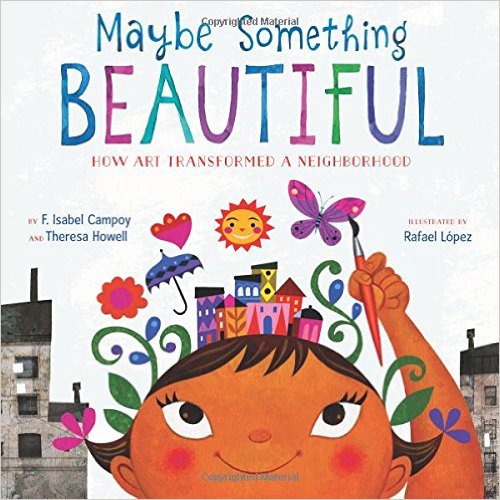 by F. Isabel Campoy and Theresa Howell Illustrated by Rafel López is a story similar to Tyree Guton’s. The fictional main character, Mira (whose name translates as “sight”) loves to draw, doodle and paint. She’s thrilled when a muralist arrives in town to spread his magic. Splashes of color brighten the bleak neighborhood. Formerly desolate spaces become beautiful. Mundane items, once painted, are auctioned off. This raises money to improve the neighborhood and provide art scholarships.
by F. Isabel Campoy and Theresa Howell Illustrated by Rafel López is a story similar to Tyree Guton’s. The fictional main character, Mira (whose name translates as “sight”) loves to draw, doodle and paint. She’s thrilled when a muralist arrives in town to spread his magic. Splashes of color brighten the bleak neighborhood. Formerly desolate spaces become beautiful. Mundane items, once painted, are auctioned off. This raises money to improve the neighborhood and provide art scholarships.
[bctt tweet=”Poverty does not crush the urge to create or the desire for beauty and art. Something Beautiful: reflects the truism that a dream possesses a powerful ability to inspire and transform lives. ” username=”GayleHSwift”]Artists have the opportunity to awaken spirits, rekindle hope and stir a sense of community. That is truly something beautiful.
Adoption-attuned Lens 
This book readily sparks a conversation about innate talent and following one’s dreams. Although Mira was only a child, her drawings brought joy and beauty to her family and community. Explore with children the influence they contribute. Help them to see how their presence in the world makes a difference. All people, but especially adoptees, like to know that they “count.” Help your kids see and believe they make a difference.
The Quiltmaker’s Gift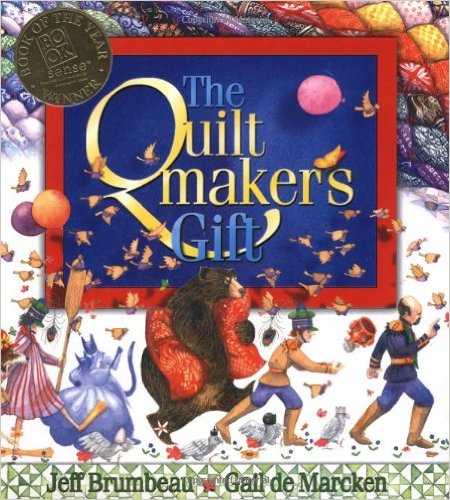 by Jeff Brumbeau delights the eye with exquisite illustrations by Gail de Marcken that detail the intricate patterns of quilt. Against the backdrop of a fairytale-like theme the story unfolds through larger-than-life events.. The main character is a generous old woman who stitches magnificent pieced quilts of such beauty that her reputation stretches throughout the kingdom and reaches the ears of his Royal Greediness. Although he owns ” almost all of the prettiest things in the world,” still he remains miserable.
by Jeff Brumbeau delights the eye with exquisite illustrations by Gail de Marcken that detail the intricate patterns of quilt. Against the backdrop of a fairytale-like theme the story unfolds through larger-than-life events.. The main character is a generous old woman who stitches magnificent pieced quilts of such beauty that her reputation stretches throughout the kingdom and reaches the ears of his Royal Greediness. Although he owns ” almost all of the prettiest things in the world,” still he remains miserable.
He covets one of her quilts and insists that she give him one. She refuses because the old woman stitches her creations and donates them only to those in need. She refuses to sell her goods to anyone. Not even the king who was neither poor nor needy. She ignores his demand for one of her glorious quilts. To punish her, he orders his soldiers to chain her in a cave with a bear. Instead of dying as he anticipated, the quiltmaker charms the bear and sews him a pillow.
The story continues with several variations of the king’s threats and how the old woman responds with kindnesses that thwart the king. Until finally, he accepts the quiltmaker’s requirement: to give away his treasure, one item at a time. [bctt tweet=”He soon discovers that the secret of happiness lies in generosity and kindness instead of greed and jealousy. ” username=”GayleHSwift”]The story comes full circle when the happy and appreciative king insists on presenting the quiltmaker with a gift. The lovely message concludes the story persuasively without an overly heavy hand.
Gail de Marcken’s watercolor illustrations create a magical mood, full of detail and charm. Not only is she an artist of exceptional talent, she knows her quilt patterns as well. Her love of the art form comes through her intricate drawings and serve as a wonderful depiction of the quiltmaker’s fantastic talent.
Adoption-attuned Lens 
One natural conversation that can arise from this story is how the diverse pieces combine to create breathtaking beauty. Similarly, families built via adoption include a unique blend of personalities, talents and genetics all of which combine to create a rich tapestry.
Our theme for today’s Diverse Children’s Books linkup is Favorite Bilingual Book(s). What are your favorite children’s books in two or more languages? (The theme is only a suggestion. Diverse posts on alternate topics are always welcome.)
What Is #DiverseKidLit?
Diverse Children’s Books is a book-sharing meme designed to promote the reading and writing of children’s books that feature diverse characters. This community embraces all kinds of diversity including (and certainly not limited to) diverse, inclusive, multicultural, and global books for children of all backgrounds.
We encourage everyone who shares to support this blogging community by visiting and leaving comments for at least three others. Please also consider following the hosts on at least one of their social media outlets. Spread the word using #diversekidlit and/or adding our button to your site and your diverse posts.
We hope this community will grow into a great resource for parents, teachers, librarians, publishers, and authors! Our next linkup will be Saturday, October 1st and on the first and third Saturdays of every month.
Upcoming Theme
Our theme for the current linkup is Favorite Bilingual Book(s). Themes are a suggestion only; all diverse book posts are welcome. If you’re interested, you can start planning now for our upcoming themes …
- October 1st and 15th linkups: Favorite Diverse Author or Illustrator. Who is a must-read author or illustrator for you? Share your favorite(s) with us for next time.
Most Clicked Post from Last Time
Miss T’s post on 7 Diverse Books Featuring a Character With A Disability was our most-clicked post of the previous #diversekidlit! This compilation reviews a great mix of fiction, nonfiction, picture books, and novels featuring characters with a range of disabilities. This is a great resource for all readers.
#DiverseKidLit is Hosted by:


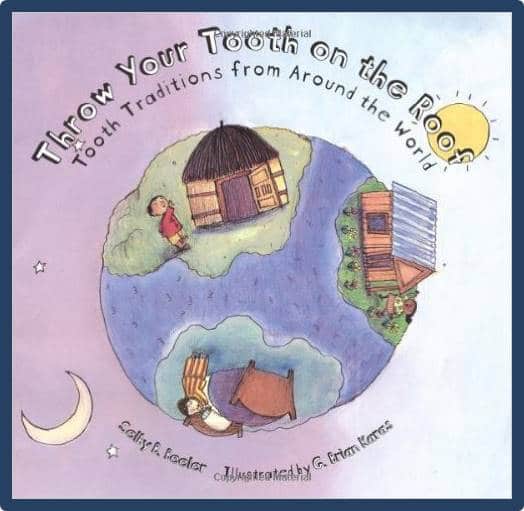 In today’s strife-ridden global world, it is reassuring to focus on the commonalities that unite us instead of the differences that divide us. Cultures around the world celebrate universal childhood milestones. Throw Your Tooth on the Roof: Tooth Traditions from around the World by Selby B. Beeler is a fun retrospective of the varied ways cultural traditions that celebrate children losing their baby teeth. Kids will get a tickle reading about the variety of celebrations. Some will feel similar, some quite unusual and some will strike their funny bones.
In today’s strife-ridden global world, it is reassuring to focus on the commonalities that unite us instead of the differences that divide us. Cultures around the world celebrate universal childhood milestones. Throw Your Tooth on the Roof: Tooth Traditions from around the World by Selby B. Beeler is a fun retrospective of the varied ways cultural traditions that celebrate children losing their baby teeth. Kids will get a tickle reading about the variety of celebrations. Some will feel similar, some quite unusual and some will strike their funny bones.![]() Adoption-attuned Lens This story offers a chance to talk about differences between families as something interesting not as something to denigrate. Every family and culture, like the patches in a piecework quilt, contribute an integral element that is part of the overall beauty and success of the whole.
Adoption-attuned Lens This story offers a chance to talk about differences between families as something interesting not as something to denigrate. Every family and culture, like the patches in a piecework quilt, contribute an integral element that is part of the overall beauty and success of the whole.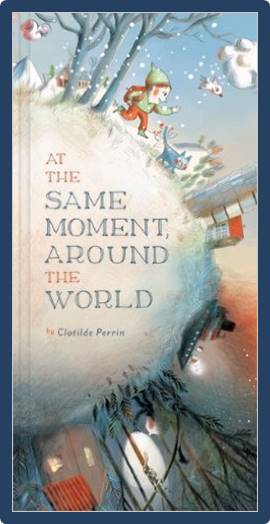 At the Same Moment Around the World by Clotilde Perrin takes the reader on a world-wide journey. Under a brilliant cloak of dawn-painted clouds, the book begins at 6:00 a.m in Dakkar, Senegal. Each subsequent page begins with the same refrain: At the same moment in…
At the Same Moment Around the World by Clotilde Perrin takes the reader on a world-wide journey. Under a brilliant cloak of dawn-painted clouds, the book begins at 6:00 a.m in Dakkar, Senegal. Each subsequent page begins with the same refrain: At the same moment in…![]() Adoption-attuned Lens This story offers a window onto the diverse ways people around the globe live. At the same time, it reinforces our commonalities. This is also true for families. Although our families came together through adoption instead of by birth, we have much in common with all families regardless of the way we formed. This book can open conversations about what kinds of things a child’s birth and adoptive families might be doing simultaneously. Some will be similar, some will not.
Adoption-attuned Lens This story offers a window onto the diverse ways people around the globe live. At the same time, it reinforces our commonalities. This is also true for families. Although our families came together through adoption instead of by birth, we have much in common with all families regardless of the way we formed. This book can open conversations about what kinds of things a child’s birth and adoptive families might be doing simultaneously. Some will be similar, some will not.

 Faith Ringgold has written and illustrated many important books. Some have won the Coretta Scott King award for illustration and one was named a Caldecott Honor book. They tackle a variety of important historical and cultural themes. Hers is a powerful and courageous voice.
Faith Ringgold has written and illustrated many important books. Some have won the Coretta Scott King award for illustration and one was named a Caldecott Honor book. They tackle a variety of important historical and cultural themes. Hers is a powerful and courageous voice.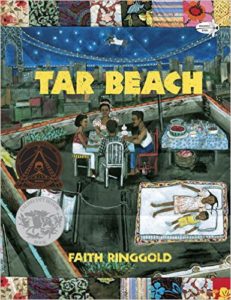 Her stunning work is unique and distinctive, full of brilliant color. Many contain quilt-like motifs which underscore the sense of diverse fragments coming together to create something of beauty and value that exceeds the individual elements.
Her stunning work is unique and distinctive, full of brilliant color. Many contain quilt-like motifs which underscore the sense of diverse fragments coming together to create something of beauty and value that exceeds the individual elements.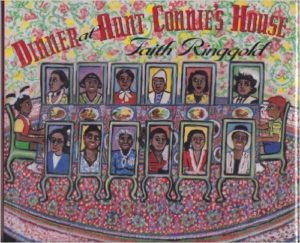
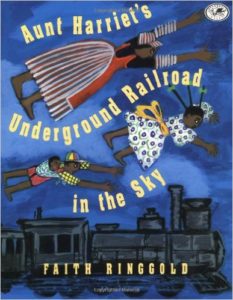 In
In

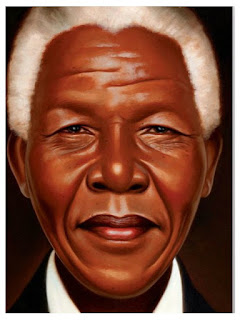


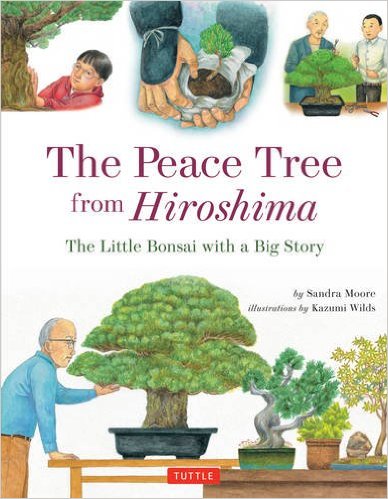
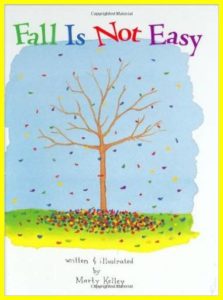
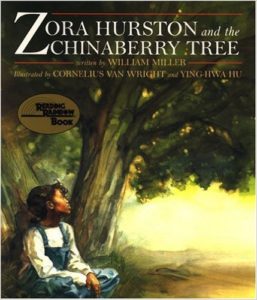
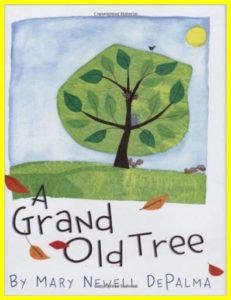 A Grand Old Tree
A Grand Old Tree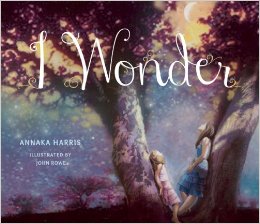
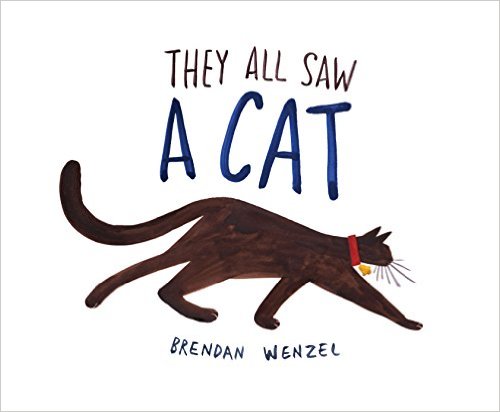
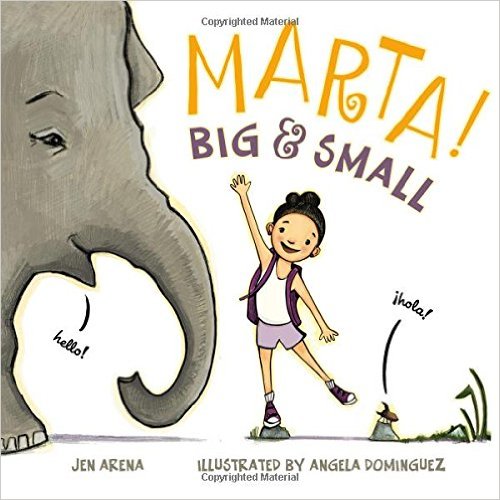
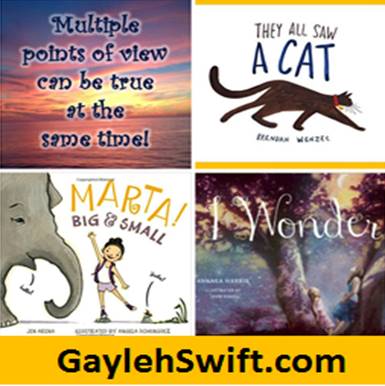 For them, adoption, originates with significant loss (their first family.) Even in open adoptions, where children know and interact with birth family, children lost the opportunity for their birth parents to have raised them.
For them, adoption, originates with significant loss (their first family.) Even in open adoptions, where children know and interact with birth family, children lost the opportunity for their birth parents to have raised them.
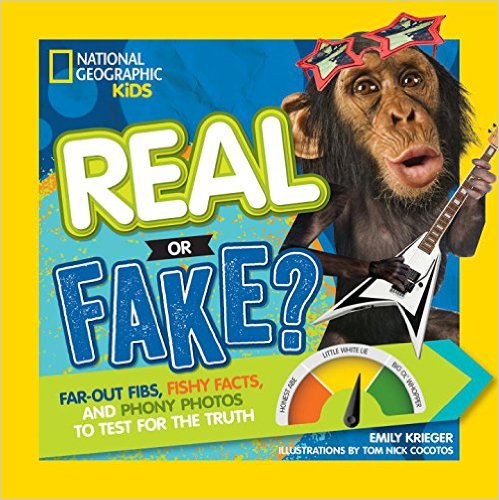
 I enjoy reading children’s books that reveal the power of art and how we are all artists who can find and create beauty and value in unexpected places. We can transform the ordinary, the plainest scraps–of fabric, metal, paper and plastic– even trash into something glorious, inspirational and uplifting.
I enjoy reading children’s books that reveal the power of art and how we are all artists who can find and create beauty and value in unexpected places. We can transform the ordinary, the plainest scraps–of fabric, metal, paper and plastic– even trash into something glorious, inspirational and uplifting.



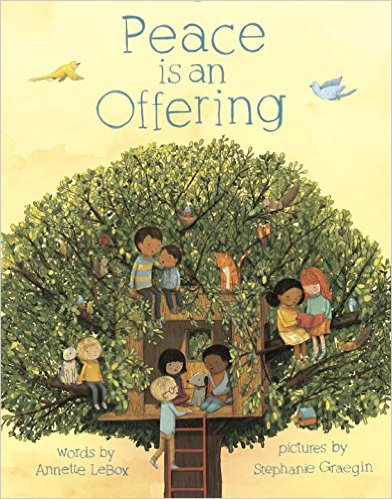
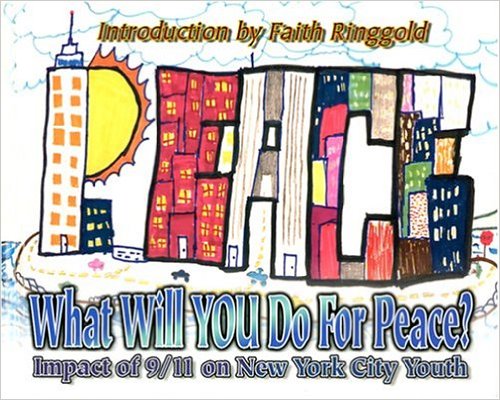
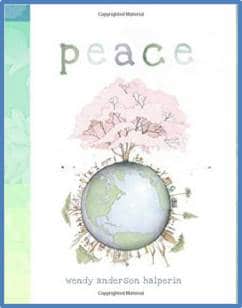

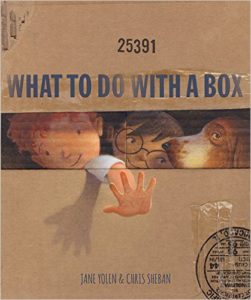


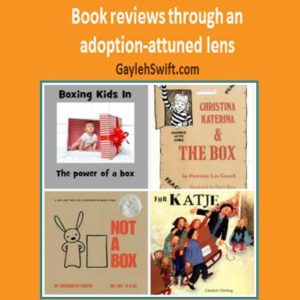
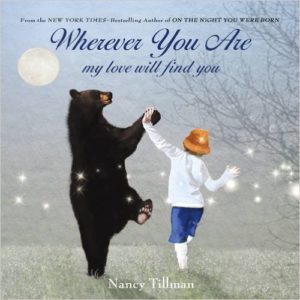 Before tackling the difficult stuff, read books which reassure children and build a firm foundation of security. Nancy Tillman, author of the NY Times Bestselling
Before tackling the difficult stuff, read books which reassure children and build a firm foundation of security. Nancy Tillman, author of the NY Times Bestselling 
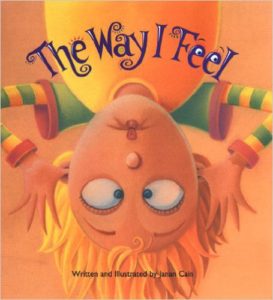
 Ida, Always
Ida, Always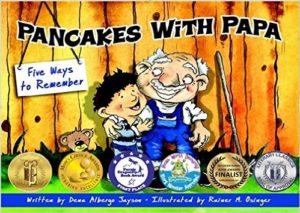
 Introducing new information in alphabetical order allows kids to intuitively use this familiar sequence to help them store and retrieve data. It’s a built-in, subconscious organizational system which gives rise to our cultural expression, “easy as ABC.” Whether helping children learn how to care for the earth, explore the variety of our planet’s wildlife, pick up another language, or wrestle with the complexities of adoption, an ABC format eases new learning. This post will review four alphabet books. While they touch on very different topics, each presents information in alphabetical order.
Introducing new information in alphabetical order allows kids to intuitively use this familiar sequence to help them store and retrieve data. It’s a built-in, subconscious organizational system which gives rise to our cultural expression, “easy as ABC.” Whether helping children learn how to care for the earth, explore the variety of our planet’s wildlife, pick up another language, or wrestle with the complexities of adoption, an ABC format eases new learning. This post will review four alphabet books. While they touch on very different topics, each presents information in alphabetical order.
